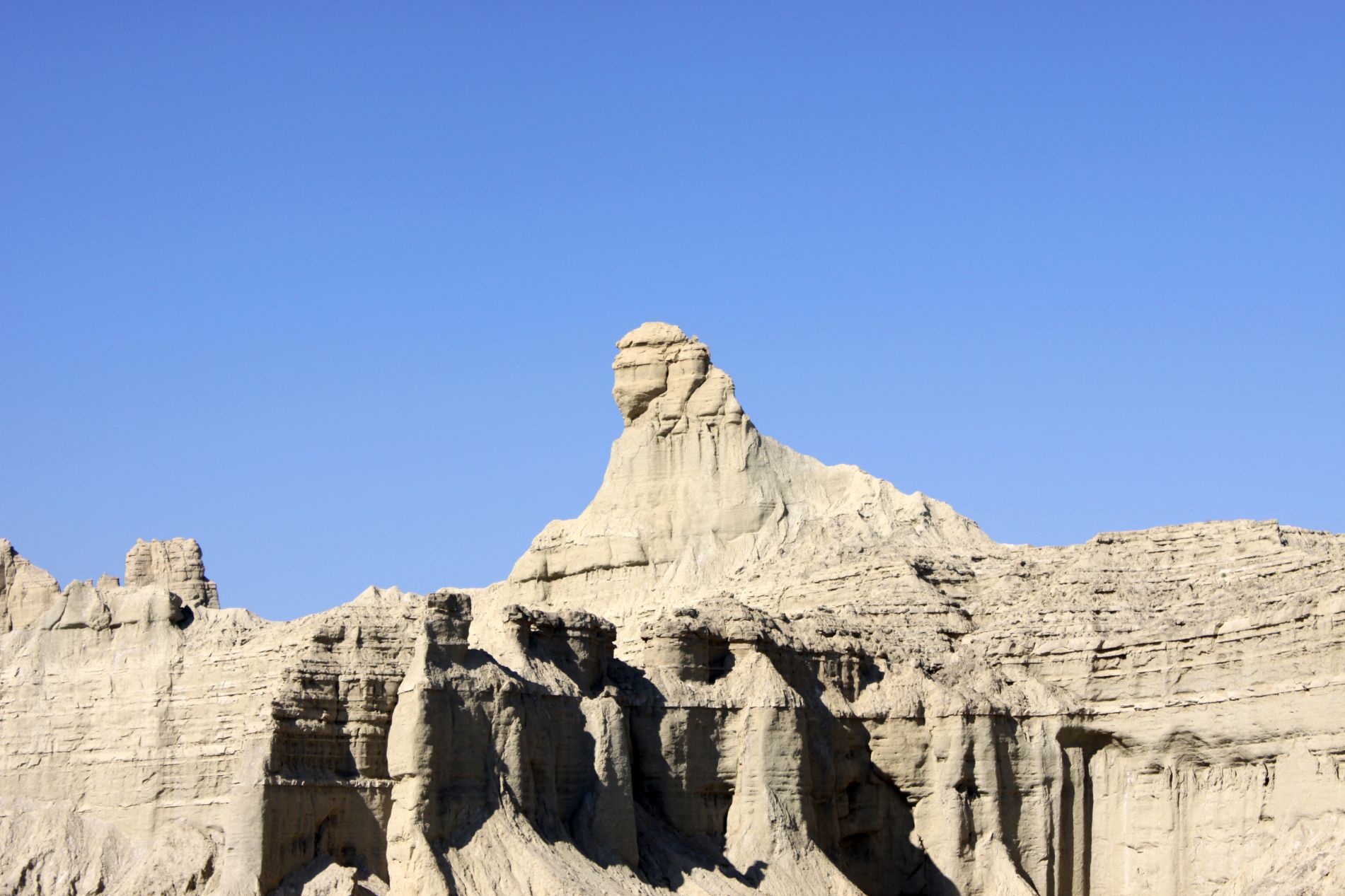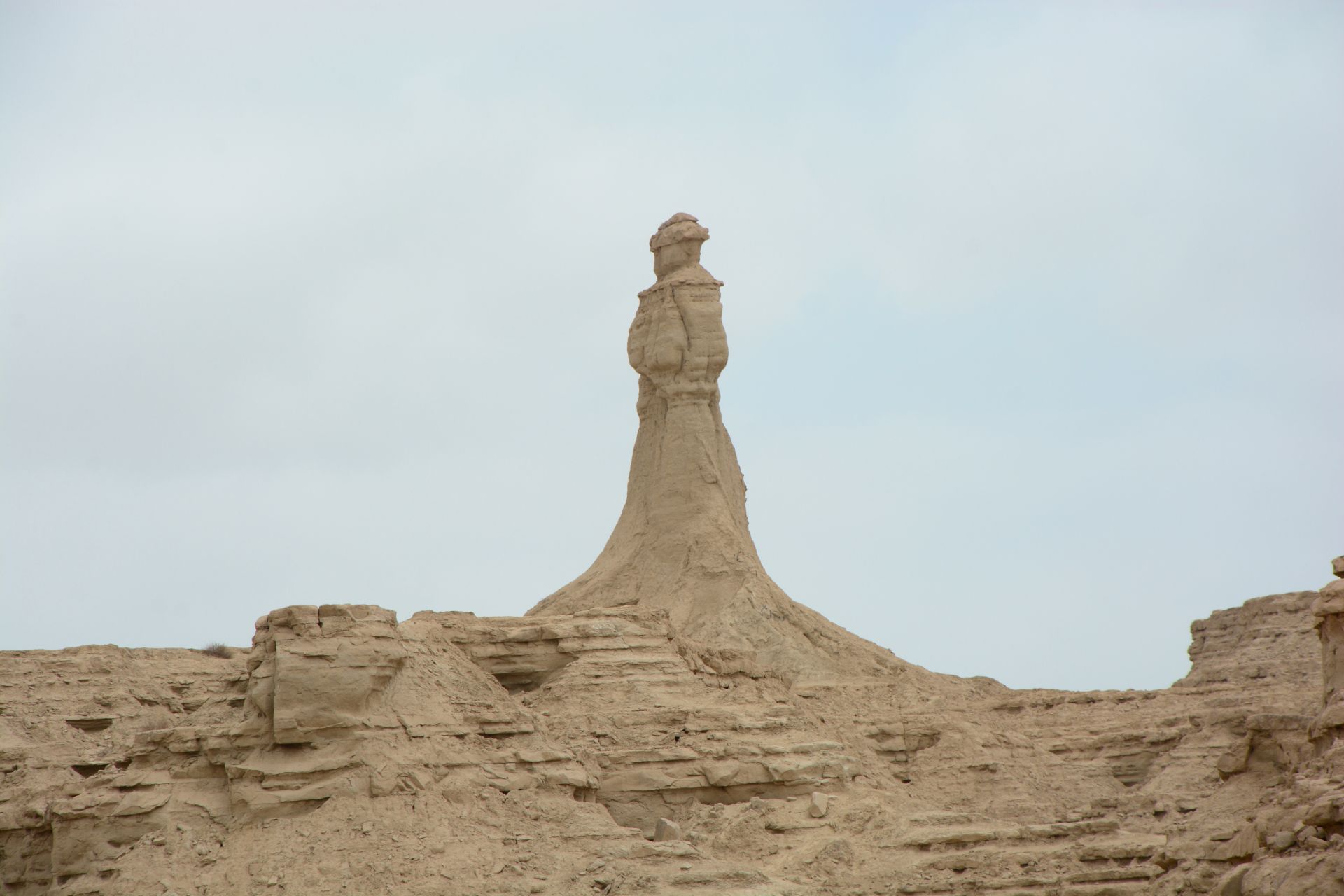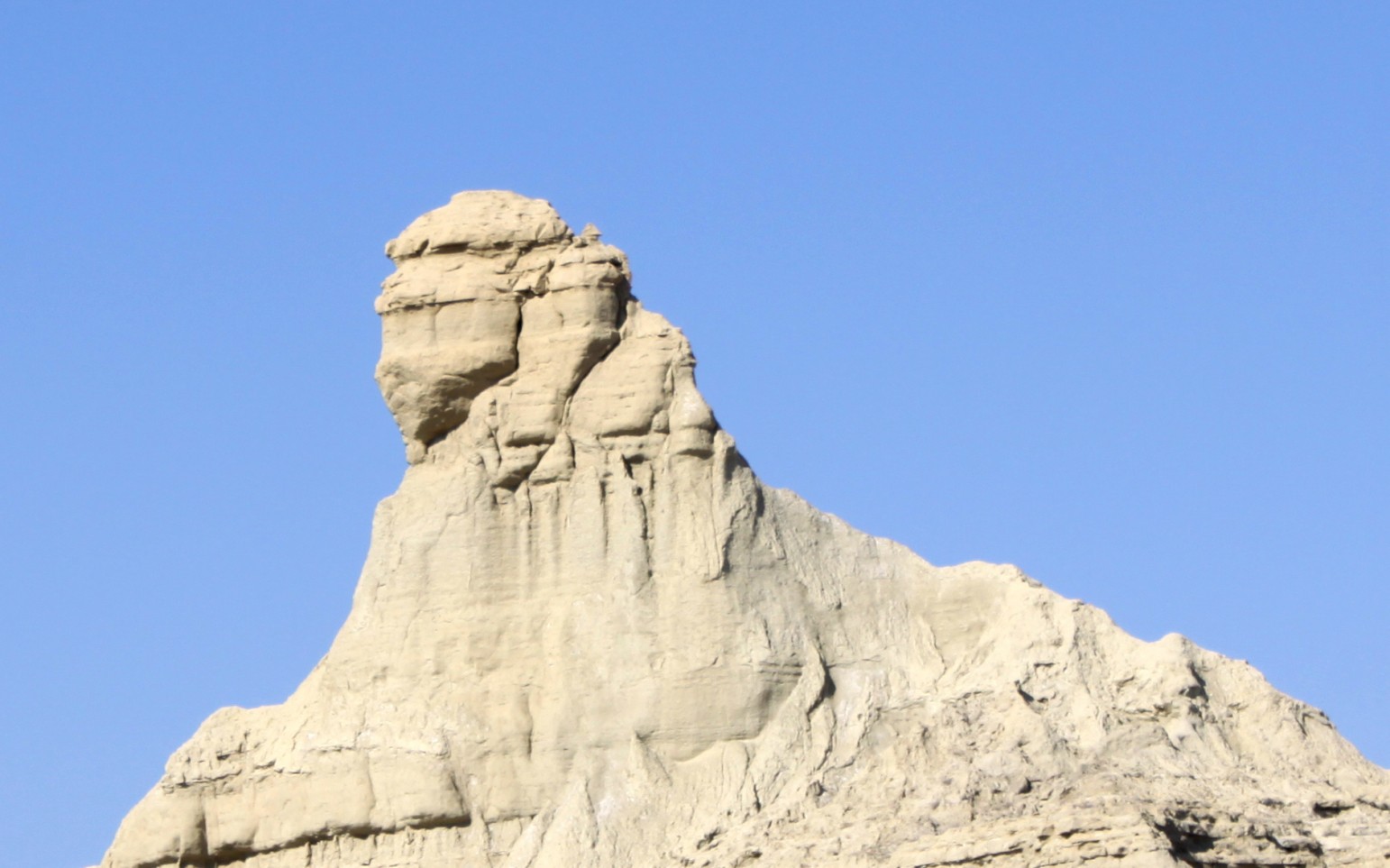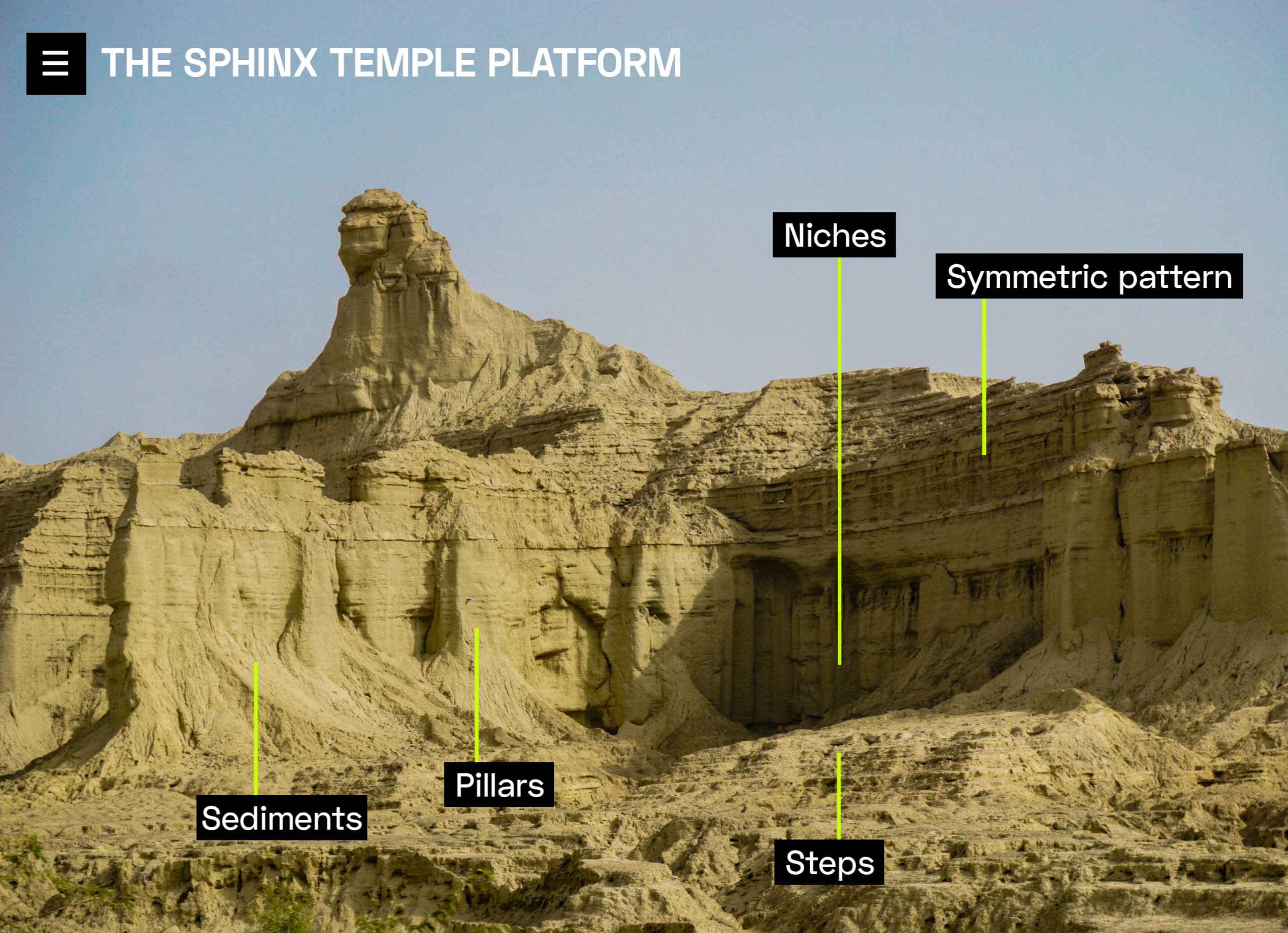In 2004, the Makran Coastal Highway was constructed in Pakistan. This new road connected Karachi with the port city of Gwadar, and also facilitated tourists to access the Hingol National Park, which is 240 kms (150 miles) away from Karachi. This park is home to the remarkable ‘Balochistan Sphinx’, a colossal rock formation.

Not far from this peculiar rocky outcropping is another peculiar structure called the ‘Princess of Hope’ (shown in the image below). Though these strange looking structures are believed to be the result of wind and rain carving the landscape, one can’t help but wonder if there is more to the story.

Today, archaeologists are exploring the vast amount of evidence, suggesting that civilizations existed in ancient times prior to recorded history, and that advanced technology was in use thousands of years before it was officially invented. Additionally, the Great Sphinx of Egypt is gaining more attention due to weathering patterns that point to a much earlier date of its creation.
Bibhu Dev Misra, an Indian author and indipendent researcher, has commented that the Sphinx of Balochistan in Pakistan could be much older than its Egyptian equivalent when its location is taken into consideration. He described the site as a “gigantic, rock-cut, architectural complex”.
In his writing, Dev Misra gave an account of the Sphinx, saying:
A cursory glance at the impressive sculpture shows the Sphinx to have a well-defined jawline, and clearly discernible facial features such as eyes, nose, and mouth, which are placed in seemingly perfect proportion to each other.
According to Dev Misra, just like the Sphinx at Giza, the Pakistani formation appears to include a head-dress similar to the Nemes head-dress worn by the ancient Pharaohs, with its striped markings on a cloth which covers the crown and the back of the head of its wearer. The flaps hanging down near the ears are also clearly visible on the Balochistan Sphinx, whilst the horizontal groove resembling the pharaonic headband can be seen adorning the forehead.

The legs and paws of the mythical beast are also clearly defined. Dev Misra writes:
One can easily make out the contours of the reclining forelegs of the Sphinx, which terminate in very well-defined paws. It is difficult to see how nature could have carved out a statue that resembles a well-known mythical animal to such an astonishingly accurate degree.
Dev Misra further points out that the Sphinx stands atop an impressive temple platform that features some rather uncommon features. As illustrated below, there are distinctive niches and columns-like structures in the rock beneath the Sphinx formation.
The presence of symmetrical features across the area could be interpreted as the result of human effort, thus negating the popular opinion that the site was created by nature. Evenly shaped formations like steps give credence to the theory that the site is more than an accidental resemblance to a temple.

Dev Misra stated that the steps were evenly divided and of equivalent size, giving the site a feeling of magnificence. It was evident that the rocky architectural complex had been exposed to severe weather and had been concealed by layers of sediment, hiding the more intricate details of the carvings.
Although mainstream researchers found these Baluchistan structures to be nothing but a natural rock formation in their geological studies, out-of-the-box thinkers like Dev Misra firmly believe that investigative work and correct analysis of this distant location in Pakistan might prove to be the discovery of another forgotten civilization that existed even before the ancient Egyptian period or Gobekli Tepe in Turkey. It is only a matter of time to determine the outcome.




